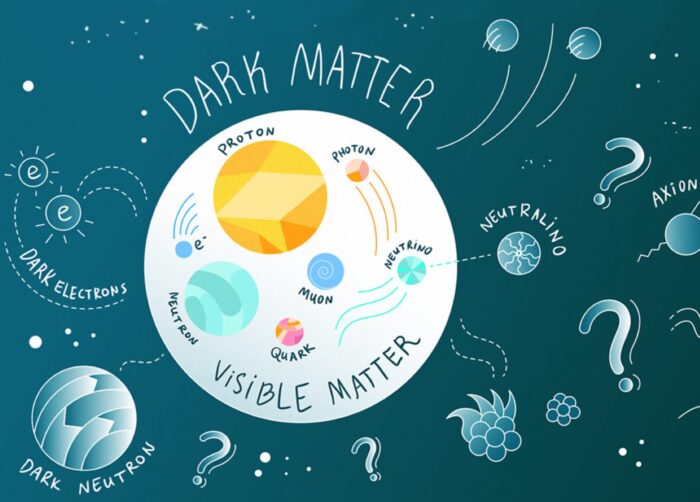Dark Matter

There is strong evidence that more than 80% of all the matter in the universe is not composed of familiar atoms and molecules, and does not scatter, absorb, or emit light at any detectable level. This is known only because of its gravitational effects on the visible constituents of the universe.
Scientists have long labeled this hidden matter as “dark matter” (although “transparent” or “invisible” matter might be a more accurate term), and they believe it forms an invisible scaffolding that supports the large-scale structure of the universe, and forms large halos around galaxies including our own Milky Way. The fundamental nature of dark matter remains an outstanding puzzle of astrophysics, cosmology, and particle physics: figuring it out could provide clues to new fundamental particles or principles of physics, or reveal the history of the universe in its first moments.
There are many worldwide experimental and theoretical efforts underway to discover the nature of dark matter, and MKI researchers are helping explore this puzzle from a range of different directions.

The dark matter distribution of the Milky Way
Prof. Lina Necib and her research group are seeking to better map out the distribution and history of dark matter in our Milky Way Galaxy and beyond, with the potential to find new clues as to its nature. Using data from the Gaia satellite, they recently mapped out the underlying dark matter distribution in the outskirts of the Galaxy.
Large-scale dark matter structure of the universe
Prof. Mark Vogelsberger and his research group lead sophisticated simulations of the growth of the dark matter scaffolding of our universe, including how different possibilities for the nature and physics of dark matter could affect what is observed with telescopes.
Dark matter and its interactions
Prof. Tracy Slatyer and her research group study theoretical scenarios for dark matter with a particular focus on cases where dark matter has non-gravitational interactions with itself or with known particles; such interactions could reshape the history of the early universe, and leave visible imprints in light across the electromagnetic spectrum, which could be detected by sensitive telescopes.
Black holes in the infant universe
Prof. Alan Guth and his research group are exploring the possibility that tiny black holes, produced from the first instants of the universe’s history, could make up some or all of the dark matter.